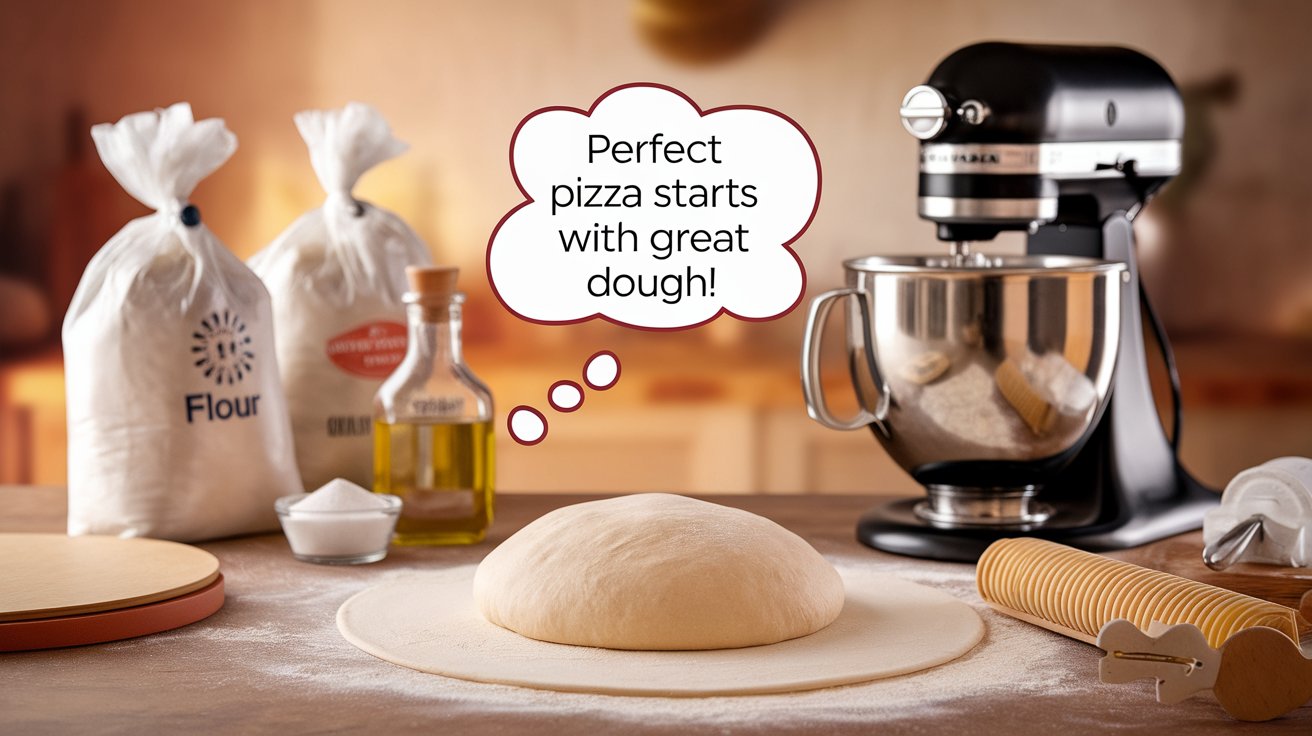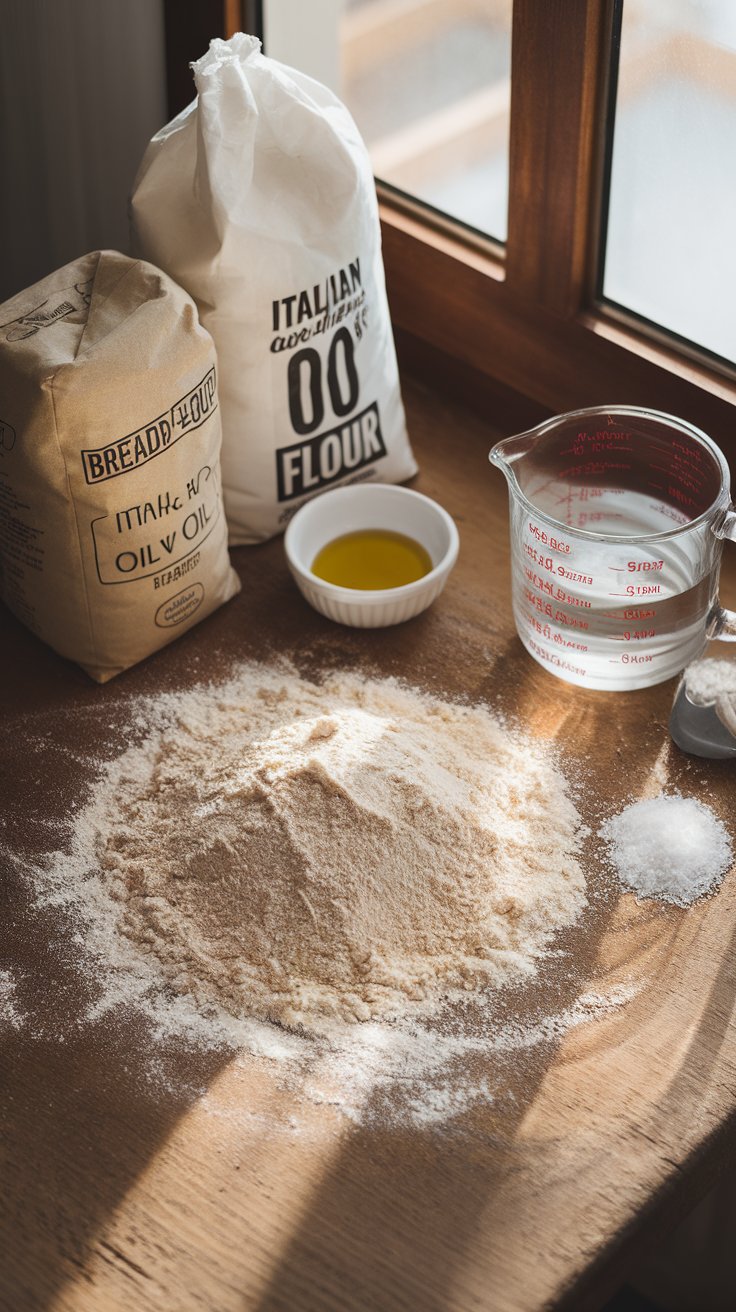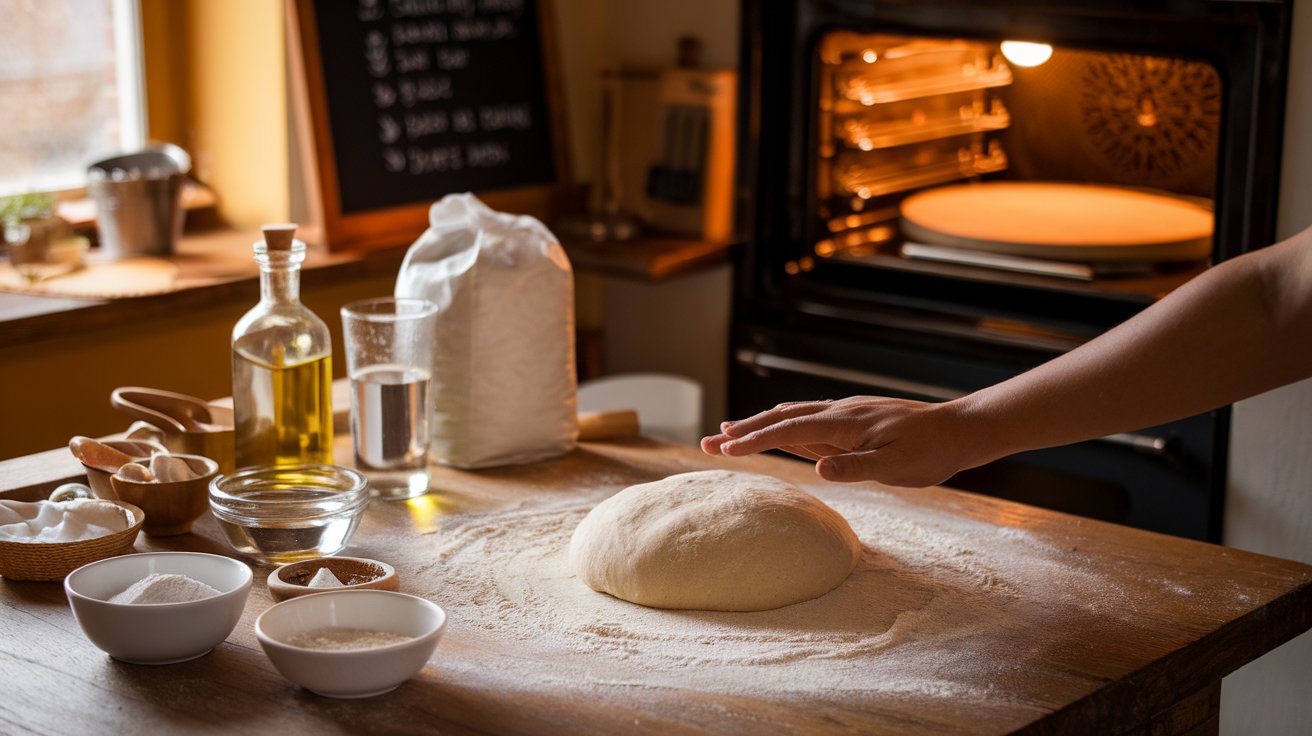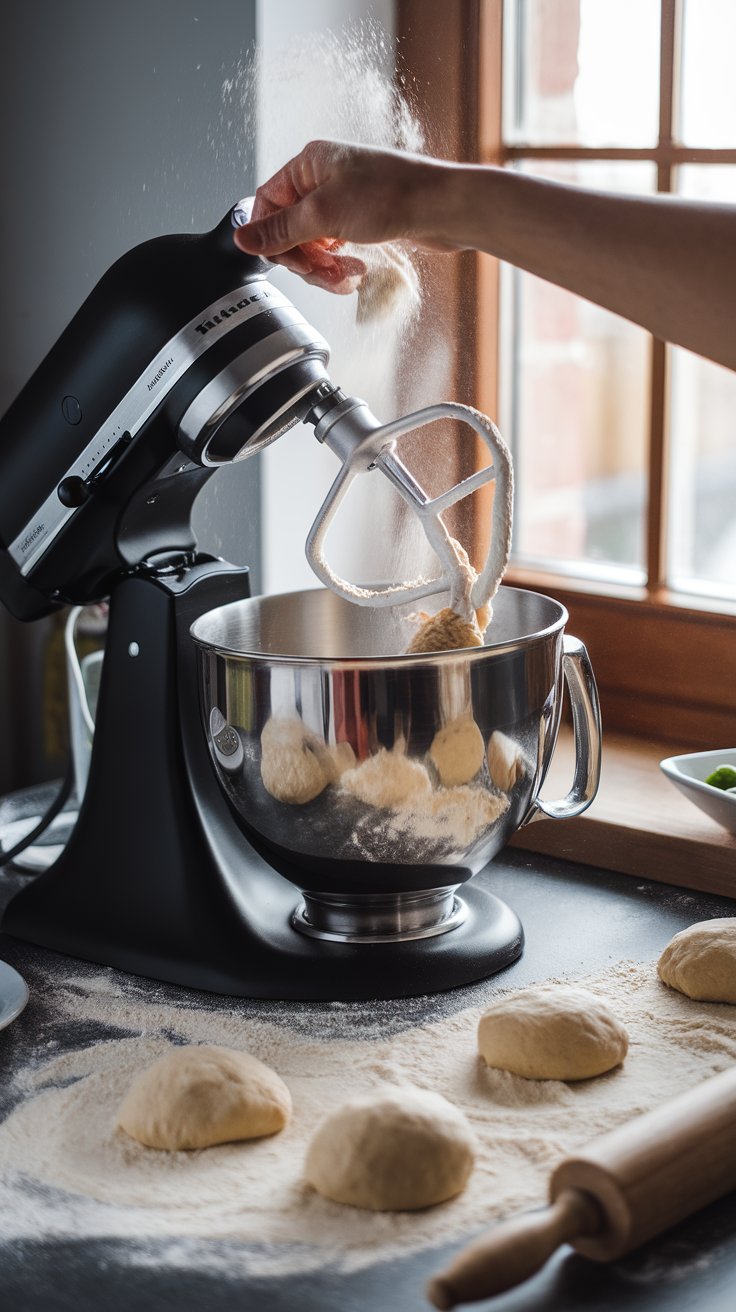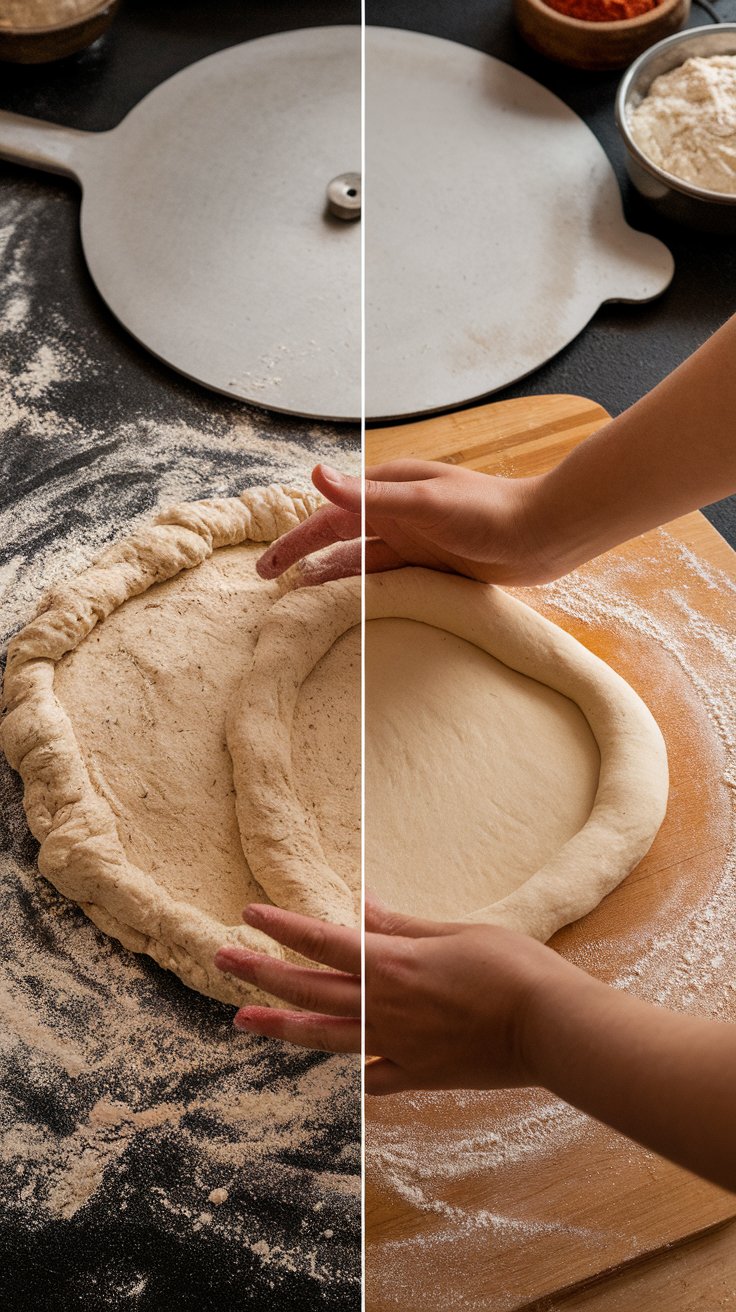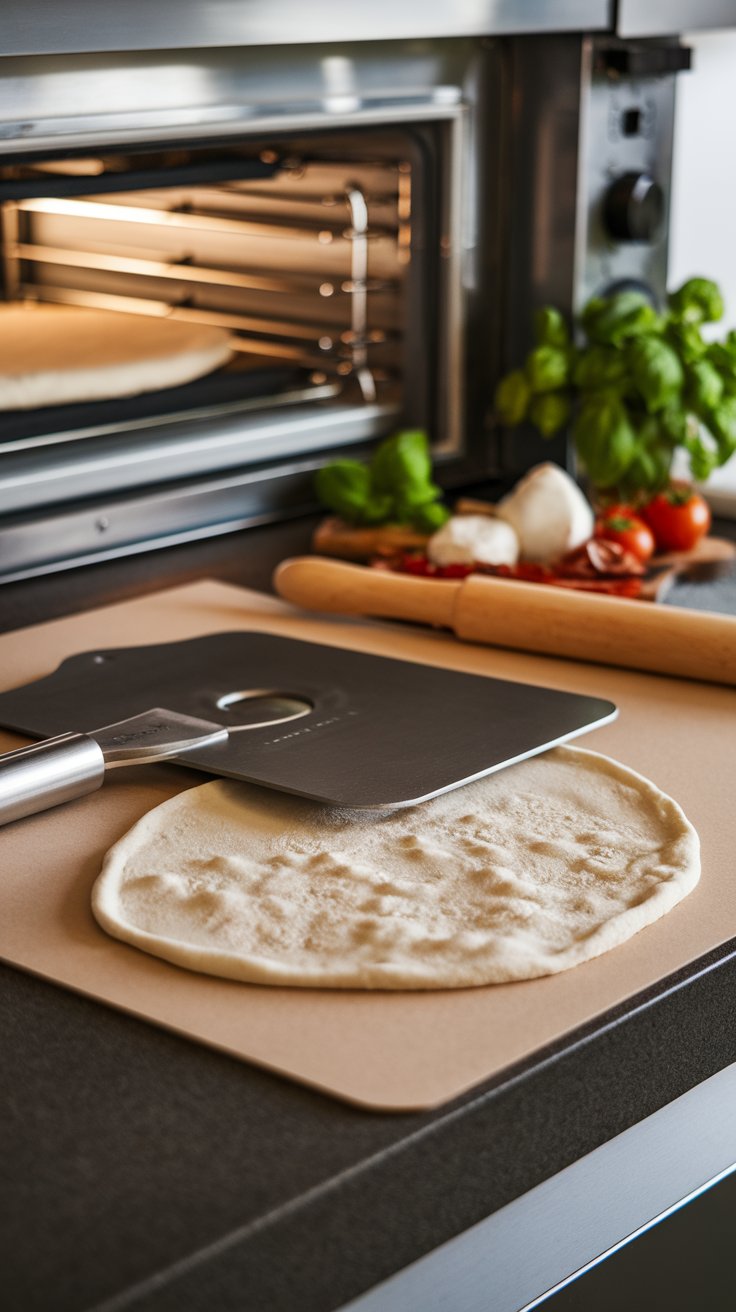Introduction
Pizza-making at home is a delightful experience, but achieving the perfect pizza dough can be a challenge without the right techniques. From selecting the best flour and yeast to mastering the art of kneading and proofing, every step plays a critical role in creating a crust that’s both chewy and tender. Whether you’re a novice or an experienced home chef, understanding these foundational elements can raise your pizza-making skills.
This guide dives deep into the secrets of crafting pizza dough, highlighting common mistakes to avoid and expert tips for perfect results. With the right tools, techniques, and attention to detail, you’ll be well-equipped to create homemade pizzas that rival your favorite pizzerias. Let’s unlock the potential of your kitchen and take your pizza game to the next level.
Key Takeaways
- Selecting high-quality flour, yeast, and other ingredients is vital for making exceptional pizza dough.
- Proper kneading and proofing methods ensure dough elasticity and a light, airy crust.
- Avoid frequent errors like overworking the dough or skipping proper rising times.
- Using tools like a pizza stone or steel helps achieve a crisp, evenly baked crust.
- Experimenting with advanced methods, such as slow fermentation, adds depth to flavor and texture.
- Patience and attention to detail help create homemade pizza that competes with professional results.
The Secrets to Perfect Pizza Dough: Choosing the Right Ingredients
Creating exceptional pizza dough begins with selecting high-quality ingredients. Opt for bread flour or Italian “00” flour for superior gluten structure and elasticity, ensuring a chewy yet tender crust. Active dry yeast or instant yeast is important for leavening, while the right water-to-flour ratio affects hydration and texture. Adding olive oil contributes to a soft, flavorful dough, while a pinch of salt balances flavors. Using fresh, premium ingredients ensures your dough becomes the perfect canvas for your favorite toppings, creating a base that bakes beautifully in the oven.
Understanding Flour Types for Pizza Dough
Choosing the right flour is crucial for developing the ideal pizza dough. Bread flour provides a higher protein content that contributes to a pleasantly chewy crust, while Italian “00” flour yields a lighter, more delicate base. All-purpose flour works for various recipes, offering a balanced, versatile option. Each flour type delivers a unique texture and flavor, so matching it to your desired pizza style is key when you make pizza dough from scratch.
The Role of Yeast and Hydration in Dough Development
Yeast breathes life into pizza dough, helping it rise for a fluffy, airy texture. Whether you choose instant yeast or active dry yeast, proper activation is necessary for success. Water-to-flour ratios also matter; a well-hydrated dough is typically smooth and easy to stretch. Balancing these factors sets the stage for a dough that bakes into a golden, perfectly risen crust.
Essential Tools for Perfect Pizza Dough Preparation
1. Kitchen Scale
A kitchen scale ensures precise measurements for flour and water, promoting consistency and better results.
2. Pizza Stone or Steel
These surfaces mimic professional oven conditions, producing a crisp, evenly baked crust.
3. Stand Mixer with Dough Hook
A stand mixer saves time and energy, helping you knead dough to an optimal texture without overworking it.
4. Pizza Peel
A peel makes transferring pizza to the oven effortless, keeping your dough intact and beautifully shaped.
5. Airtight Containers
These containers maintain the dough’s humidity during proofing, preventing it from drying out.
6. Dough Scraper
A dough scraper helps you divide, shape, and manage sticky dough on your work surface.
7. Oven Thermometer
Using an oven thermometer confirms you’re baking at the correct temperature for a perfect crust.
8. Rolling Mat or Floured Surface
These work areas allow comfortable shaping of your dough without the risk of sticking or tearing.
Mastering the Art of Pizza Dough Preparation at Home
Making pizza dough at home is both satisfying and delicious. Start by proofing your yeast in lukewarm water to ensure it’s active and ready. Use a stand mixer fitted with a dough hook to combine ingredients, or knead by hand if you prefer a more hands-on approach. Let the dough rise at room temperature or refrigerate it overnight for enhanced flavor. By following these steps with care, you set the groundwork for an airy, inviting crust that’s perfect for your favorite pizza toppings.
Step-by-Step Guide to Kneading and Proofing
Kneading strengthens the gluten in your dough, helping it maintain its structure during baking. Aim for a smooth, elastic texture—this indicates proper gluten development. After kneading, proof the dough by allowing it to rest. Room-temperature proofing is quicker, while a longer cold proof in the fridge allows for deeper flavors. By managing your proofing times, you’ll achieve a consistent, well-developed homemade pizza dough.
Techniques for Shaping and Stretching Pizza Dough
Shaping pizza dough requires a gentle approach to preserve the air pockets formed during proofing. Flatten the center lightly and push the dough outward, gradually working toward the edges. Avoid using a rolling pin, as it can compress the dough. By stretching it with your hands, you help maintain the airy interior necessary for a soft, chewy pizza crust. This process is especially important if you plan to bake the pizza on a pizza stone or steel for the best results.
Case Study: Overcoming Dough Texture Challenges with Advanced Techniques
When Sarah, an avid home baker, decided to host a pizza night, her dough often turned out dense or overly sticky. Frustrated by the inconsistent results, she set out to improve her technique. First, she switched to bread flour for its higher protein content, boosting elasticity in her dough. She also invested in a kitchen scale to ensure precise measurements, eliminating guesswork in her recipes. She began experimenting with hydration levels, maintaining a 65% water-to-flour ratio for a softer texture. By refrigerating her dough overnight, she fostered slow fermentation and richer flavors.
The payoff was immediate—Sarah’s pizzas emerged with a chewiness and taste reminiscent of a professional pizzeria. Her efforts showed that when you focus on quality ingredients, correct measurements, and properly timed techniques, homemade pizza dough can truly become an impressive centerpiece at any gathering.
Common Pitfalls to Avoid When Making Homemade Pizza Dough
Even seasoned cooks encounter hurdles when making pizza dough at home. Overkneading can yield a tough crust, while underproofing results in a dense and bland base. Improper ingredient measurements can disrupt hydration levels, causing dough to become too sticky or too dry. Skipping essential steps, like preheating your oven or pizza stone, undermines the final texture and flavor. By being aware of these mistakes and taking measures to fix them, you’ll produce a consistently delicious dough for all your pizza-making adventures.
Troubleshooting Dough Texture Issues
A sticky dough usually signifies too much water or not enough flour. On the other hand, dough that’s overly firm could mean you need more moisture. Kneading thoroughly helps the gluten develop correctly, providing better structure. Let the dough rise at room temperature or in the fridge for the recommended time to prevent a flat or overly dense pizza crust.
Avoiding Baking Mistakes for Perfect Results
Baking is often where a great crust can fall short. If your oven isn’t fully preheated, the center of the dough may remain undercooked while the edges brown. Too many toppings can weigh the dough down, leading to an uneven bake. Keep an eye on your oven temperature and rotate the pizza halfway through cooking. Paying attention at this final stage is crucial for pulling off the best pizza at home.
“Great pizza starts with great dough. It’s the foundation that transforms simple ingredients into something extraordinary.” — Tony Gemignani, World Champion Pizza Maker
Enhancing Your Pizza Game with Expert Techniques and Tools
Sometimes, small tweaks can make a dramatic difference in the final taste and texture of your dough. Investing in a pizza stone or steel helps replicate professional-style heat distribution. Hand-stretching the dough, rather than using a rolling pin, prevents compressing those crucial air pockets. Experiment with cold fermentation by leaving the dough in the refrigerator for up to three days, letting flavors intensify naturally. With these advanced methods, your pizza can shine every time.
The Benefits of Using a Pizza Stone or Steel
A pizza stone or steel locks in high temperatures, cooking the dough evenly and producing a crisp bottom crust. Preheating these surfaces before sliding in the pizza is vital for avoiding a soggy base. By replicating a professional oven environment, these tools deliver consistently delicious homemade pizza dough results without demanding restaurant-level equipment.
Advanced Dough Techniques for Flavor and Texture
Take your pizza dough to a new level by embracing methods like slow fermentation. Leaving the dough in the fridge for 24–72 hours fosters deeper, richer flavors as enzymes break down starches. Ensuring a balanced water-to-flour ratio also helps the crust maintain its shape while achieving the perfect blend of chewiness and tenderness. Combining these refinements can give your pies a gourmet edge right from your own kitchen.
Conclusion
Creating the perfect pizza dough is both an art and a science, requiring close attention to ingredients, technique, and tools. By understanding the role of key components like flour, yeast, and hydration, you set the stage for a crust that delivers an amazing pizza experience. Whether you knead by hand or use a stand mixer, each step—from shaping to baking—contributes to the final quality of your dough.
Avoiding common setbacks and trying advanced techniques like slow fermentation can greatly improve the flavor and texture of your homemade dough. With practice and patience, your pizza becomes a culinary triumph and a source of joy. The path to mastering pizza dough is well worth the effort, rewarding you with mouthwatering results every single time.


